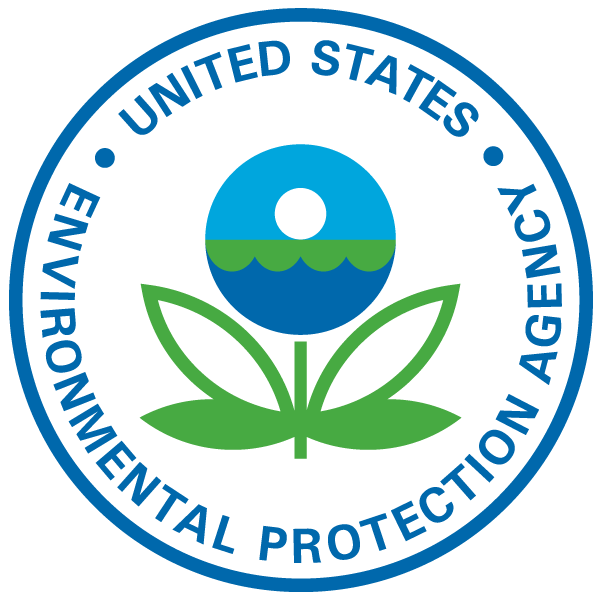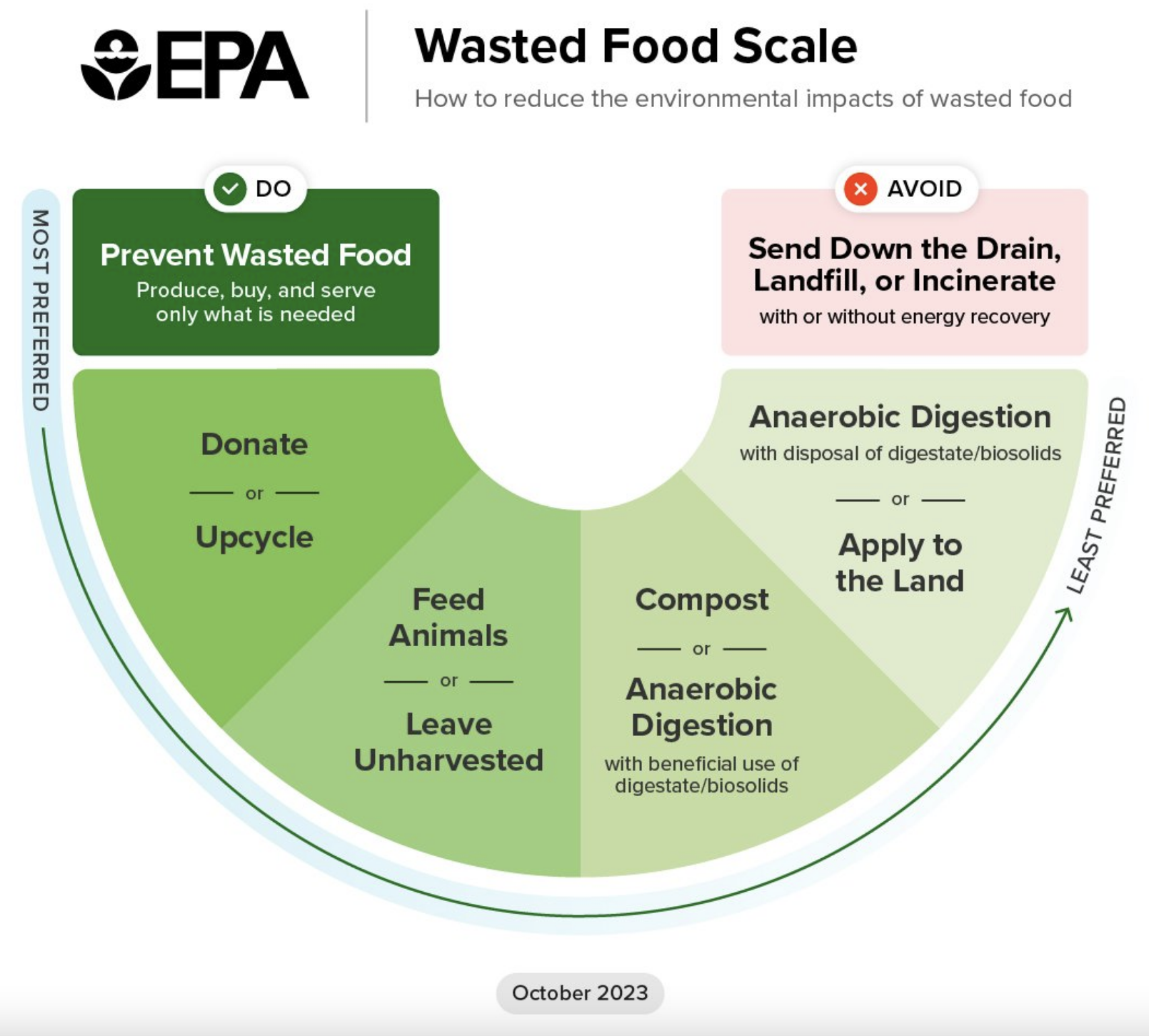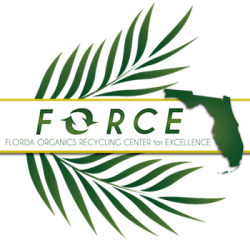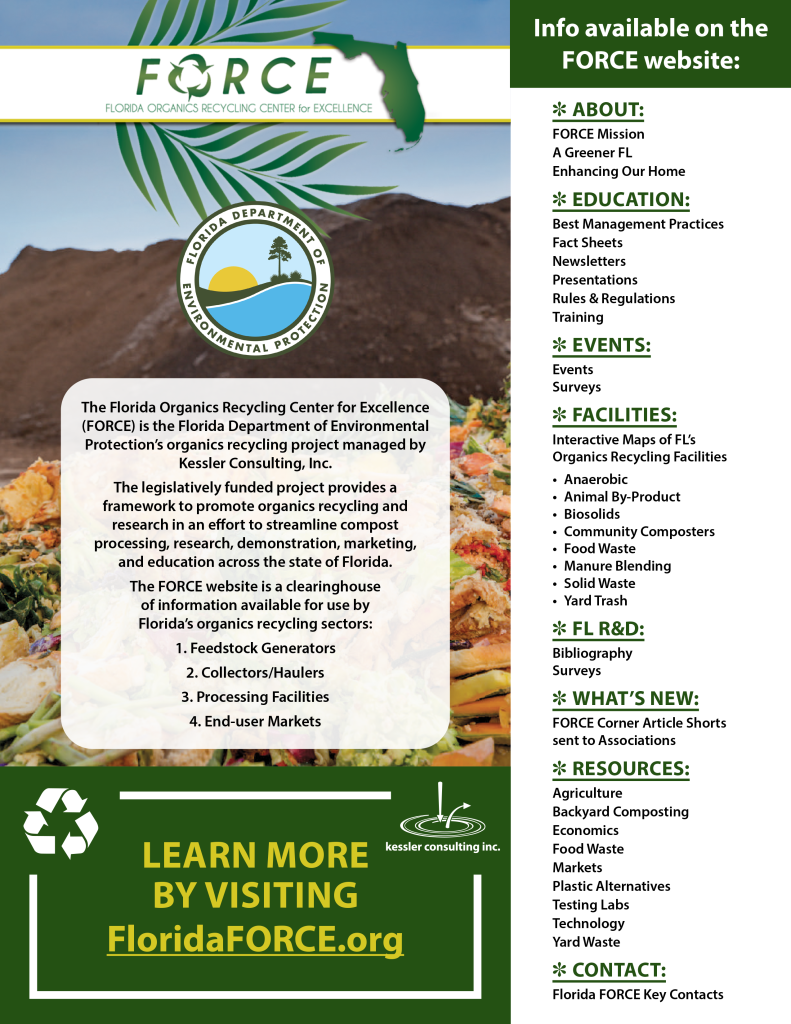EPA FOOD DIVERSION

U.S. ENVIRONMENTAL PROTECTION AGENCY (EPA)
ORGANICS RECYCLING PROGRAM: FOCUS ON FOOD WASTE
On September 16, 2015, in alignment with Target 12.3 of the United Nation’s Sustainable Development Goals, the United States Department of Agriculture (USDA) and EPA announced the first ever domestic goal to reduce food loss and waste by half by the year 2030. By taking action on this Goal, the United States can help feed the hungry, save money for families and businesses and protect the environment. It’s being led by staff from the USDA and EPA, the federal government is seeking to work with communities, organizations and businesses along with our partners in state, tribal and local government to reduce food loss and waste by 50 percent over the next 15 years. The Florida Department of Environmental Protection supports the 2030 goal.
The U.S. EPA estimates that more food reaches landfills and incinerators in America than any other single material in our everyday trash, composing about 21% of the waste stream. Approximately 20% of U.S. methane emissions come from landfills, reducing the food waste stream to landfills will help the U.S. to address greenhouse gas emissions contributing to climate change. By keeping wholesome and nutritious food in our communities and out of our landfills, we can also begin to help the 48 million Americans that live in food insecure households.
In addition, the EPA has released a research paper on wasted food in America focusing on prevention and reduction, processing, and management.
EPA WASTED FOOD SCALE
The Environmental Protection Agency prioritizes actions that prevent and divert wasted food from disposal based on a Wasted Food Scale. Tiers of the scale highlight different pathways for preventing or managing wasted food, arranged in order from most preferred on the top left to least preferred on the top right. Within a given tier, pathways are ranked equally.

For additional information on related topics, such as:
- Understanding food waste issues.
- What businesses and institutions can do to manage food waste.
- What you can do in your own home to manage food waste.
Please visit the EPA’s Webpage
EPA RESOURCES
EPA – Harvard State and Municipal Food Waste Planning
The Harvard Food Law and Policy Clinic published a Municipal Food Waste Planning Tool Kit, Keeping Food Out of the Landfill: Policy Ideas for States and Localities. The toolkit includes recommendations for each of the policy areas, which can be utilized by legislators, advocates, food donors, and food recovery organizations to call for policy changes. Each section of the toolkit describes the relevant federal laws, provides state examples, and offers the Clinic’s policy recommendations. The policy areas addressed in “Keeping Food Out of Landfills” are:
- Liability Protection for Food Donations
- Tax Incentives for Food Donations
- Date Labeling
- Food Safety for Food Donations
- Food Waste Reduction in K-12 Schools
- Feeding Food Scraps to Livestock
- Organic Waste Bans and Waste Recycling Laws
- Government Support for Food Waste Reduction

